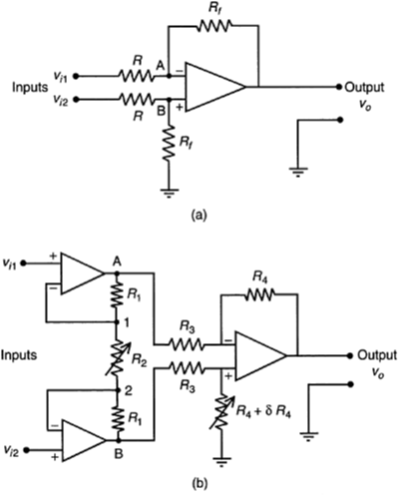SKEDSOFT

Now we use the property
uA=uB
for an operational amplifier, to eliminate uAand uBThis gives


First, the amplifier output is proportional to the “difference” and not the absolute value of the two inputs ui1 and ui2.
Second, voltage gain of the amplifier is Rf/R. This is known as the differential gain. It is clear that the differential gain can be accurately set by using high-precision resistors R and Rƒ.
In addition, an instrumentation amplifier should possess the capability of adjustable gain. Furthermore, it is desirable to have a very high input impedance and very low output impedance at each input lead. It is desirable for an instrumentation amplifier to possess a higher and more stable gain, and also higher input impedance than a basic differential amplifier.
An instrumentation amplifier that possesses these basic requirements may be fabricated in the monolithic IC form as a single package. Alternatively, it may be built using three differential amplifiers and high precision resistors. The amplifier gain can be adjusted using the fine-tunable resistor R2.
Impedance requirements are provided by two voltage follower type amplifiers, one for each input, as shown.
The variable resistance dR4 is necessary to compensate for errors due to unequal common-mode gain. Let us first consider this aspect and then obtain an equation for the instrumentation amplifier.